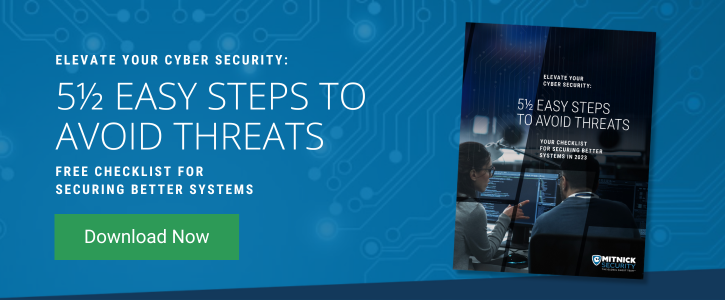In March 2022, tools manufacturer Snap-On admitted to a serious data breach that left personal information exposed including names, birth dates, social security numbers, and employee ID numbers. Perhaps the scariest part of this cybersecurity attack is that the attack type was never disclosed to the public.
With so many attack types at the disposal of threat actors, it’s more important than ever to familiarize yourself with how to stay cyber safe. Here, we’ll discuss the ins and outs of hacker tradecraft so you can confidently strengthen the security posture of your organization.
Black Hat Hackers and Their Tactics
There are many different types of hackers that a business owner should be aware of, including white hat hackers and black hat hackers. White hat hacking happens when an ethical, trained professional uses their systems knowledge to help identify vulnerabilities and improve the hacker security of organizations.
Black hat hackers, however, are threat actors who seek to illegally break into secure systems with malicious intent. Black hat hackers may:
- Breach your cybersecurity defenses to steal information.
- Gain access to your systems via your employees.
- Use a combination of exploiting vulnerabilities and tricking your staff to compromise your systems.
The two main attack types that black hackers use are ransomware attacks and social engineering attacks.
Ransomware Attacks
A ransomware attack occurs when a threat actor holds a system hostage until the victim pays the attacker to get it back. Typically, ransomware attacks are possible because a threat actor managed to infiltrate an organization’s systems and compromise the infrastructure.
Ransomware hacking groups such as REvil demand continuously increasing fees to unlock stolen data. They also now sell their hacking tools to other black hat hackers, increasing the risk of cyber attacks.
Social Engineering Attacks
Social engineering attacks are performed by malicious social engineers who use manipulation and deception to trick employees into performing a specific action, including giving the social engineer special privileges within the internal systems or other unauthorized access.
Social engineering may be used to facilitate a ransomware attack, so it’s important to understand the different ways your employees could be deceived into accidentally helping social engineers breach your security.
Password Hacks
When untrained employees use simple passwords to access their user accounts, they are leaving the door open for threat actors to use a password cracking program that can give them the password in seconds.
Routers and Wireless Access Devices
Many organizations now have hybrid or remote employees who work from all over the globe. The routers and wireless access devices of remote workers are typically far less protected than corporate networks, giving threat actors an easier way to access your internal systems.
Phishing and Spear Phishing
Phishing is when a cybercriminal mass sends emails with links that will infect or corrupt the system should an employee click on it. Spear phishing is a sophisticated version in which social engineers craft personalized, targeted emails that are more likely to trick an employee into believing the request or claim is legitimate.
What Happens After the Security Hacker Gets In?
Once a hacker breaches your infrastructure and gains access to your systems, the mayhem begins. A threat actor may cause operational disruption by taking offline your networks in a ransomware attack or may simply steal proprietary user information to sell to the dark web.
Although threat actors could steal money directly, your organization can also suffer financially through the disruption of your business, which could lead to dissatisfied customers.
Should a data breach occur, people may begin to doubt the trustworthiness of the organization, and your hard-won reputation may be left in shambles. This could cost the company money directly by losing customers and by working to repair the company’s reputation.
Types of Security Hacker Prevention
There are several ways you can improve the security posture of your organization and make it more difficult for threat hackers to compromise your systems.
Preventative measures include:
- Penetration Testing. Penetration testing, such as internal pentesting and external pentesting, are tests specifically designed to address your security concerns. Penetration testers develop a framework and find the vulnerable points within an organization’s network and systems.
- Vulnerability Assessments. A vulnerability assessment (VA) finds and quantifies known technological weaknesses in your systems and network. These are performed frequently to catch and mitigate those weaknesses before they can be exploited.
- Security Awareness Training. Using both a security training library and live hacking demonstrations in your training program can motivate, empower, and educate employees so that they become your biggest cybersecurity asset.
- Product Claims Testing. Product claims testing happens in two different ways. The first kind of test is created to ensure that your security protection products are secure and accurate in their claims. The second kind of test ensures the security of third-party products that your organization uses
Avoid Cybersecurity Threats One Step at a Time
Although there are lots of options when it comes to cybersecurity, it’s important to know which actions and methods are best for your organization. When protecting yourself, your employees, and your organization from threat actors, remember that vigilance, expertise, and education can go a long way toward preventing a security hacker from breaching your systems.
To explore how you can protect your organization in 5 ½ steps, request your free checklist.


